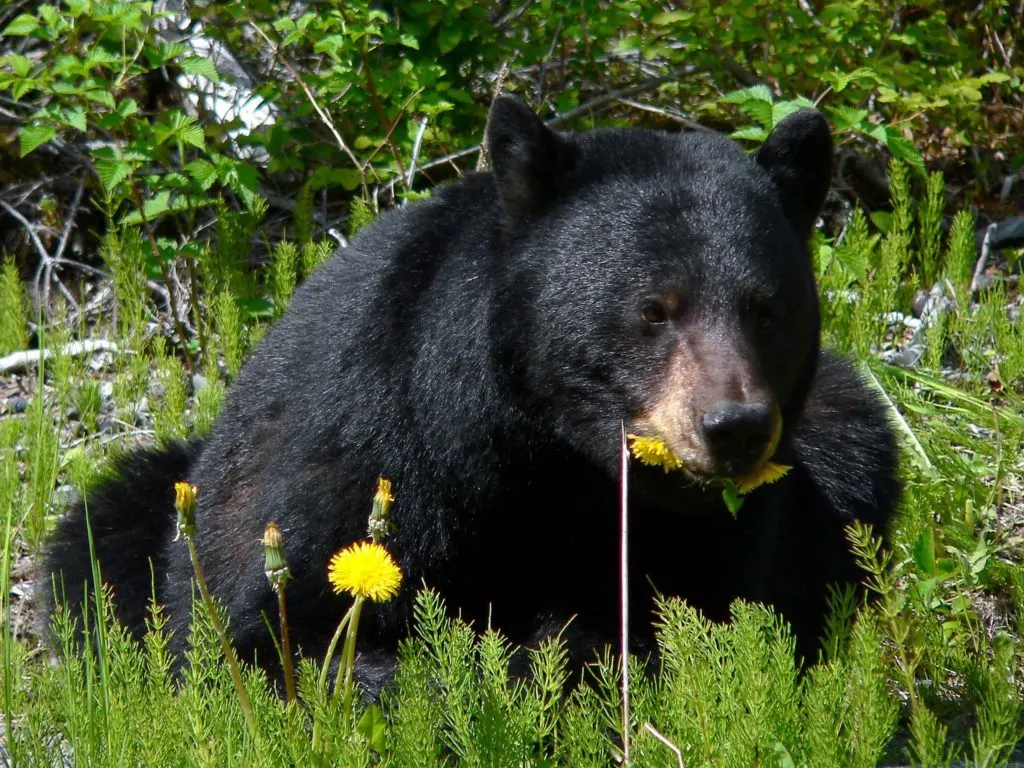
If you are going to be traveling outside in bear country, it’s important to learn the basics about bear safety. This bear safety guide contains simple steps to make sure that you keep yourself safe and reduce the chance of negative encounters.
These are widely accepted best practices for bear safety, that I gathered from reputable sources like the National Parks Service, Interagency Grizzly Bear Committee (IGBC), The North American Bear Center, Encylopedia Britannica, and other sources.
But first, before we begin, it’s important to learn the difference between the two types of bears on the North American continent. Bear safety tips are different depending on which species you are preparing for.
This post may contain affiliate links. Disclosure policy.
Black Bears Vs Brown (Grizzly) Bears
In North America, there are two types of bears: black bears and brown bears.
Black bears (also known as American bears or American black bears) are much more common than brown bears (also known as grizzly bears).
Black Bear (Ursus Americanus)
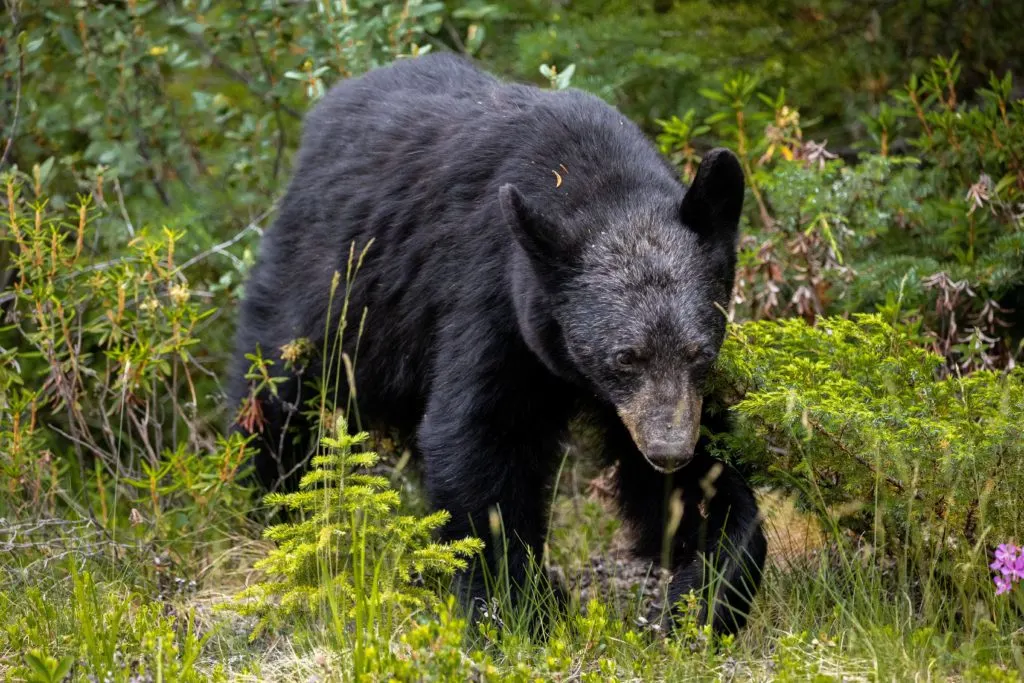
The Black Bear is the smaller of the two types of bears, weighing between 132-900 pounds. Part of the confusion comes from the fact that black bears have a wide variety of fur colors. Black bears can have fur color ranging from black to brown to blonde, and even white (like the subspecies Kermode Bear, or “spirit bear” native to British Columbia, Canada).
The American black bear habitat covers a massive range from Alaska through every province of Canada and about 40 of the continental United States. And they even range as far south as the northern forests of Mexico.
Brown Bear (Ursus Arctos)
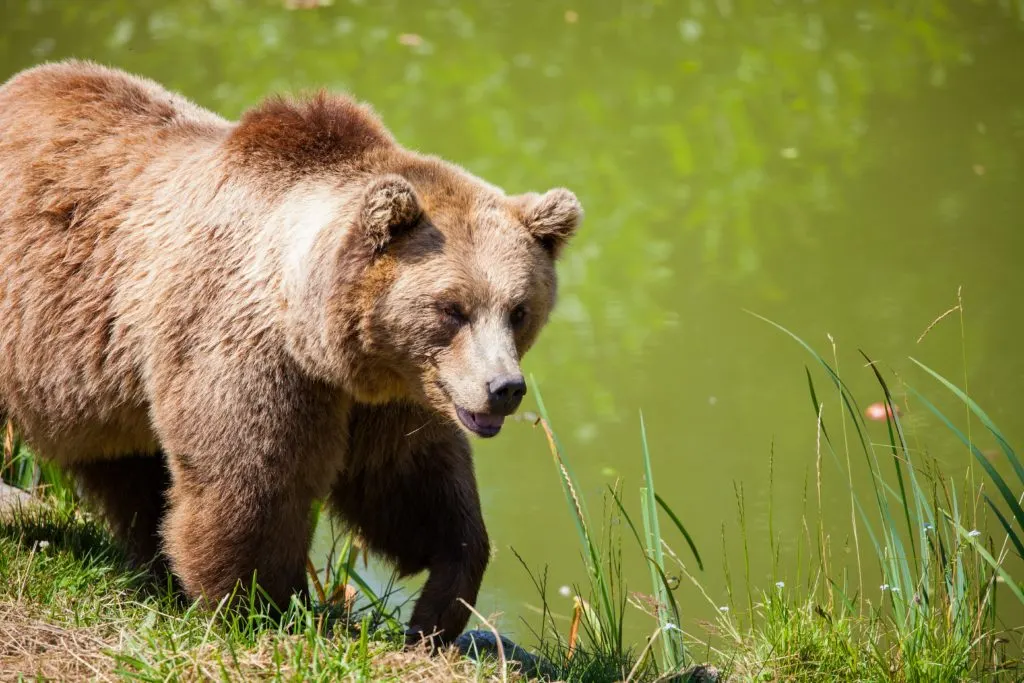
The Brown Bear (commonly referred to generically as the Grizzly Bear) is the larger of the two types of bears in North America. The other notable subspecies is the Kodiak Bear, which lives only on Kodiak Island in Alaska. Brown Bears can weigh between 180-1,300 pounds! Their fur is typically brown with dirty blonde tips, but fur color can also vary from blonde to black.
Brown bears have a distinctive shoulder hump, which is the best way to tell them apart from black bears.
Brown bear territory occupies a much smaller range in North America, which skews toward the north. The vast majority of the brown bear population is found in Alaska (≈32,000) and Canada (≈25,000).
Only a tiny population of brown bears live in the continental United States, estimated at around 1,500 bears. They are only found in Washington, Idaho, Montana, and Wyoming, and somewhat narrow regions within those states.
Biggest Takeaways: Black Bears vs Brown Bears
- In the continental United States, you are far more likely to encounter a black bear than a brown bear.
- Size and fur color is not a reliable way to identify a bear species.
- The shoulder hump on brown (grizzly) bears is usually the easiest identifier.
More ways to tell brown bears vs grizzly bears apart.
Preparing To Visit Bear Country
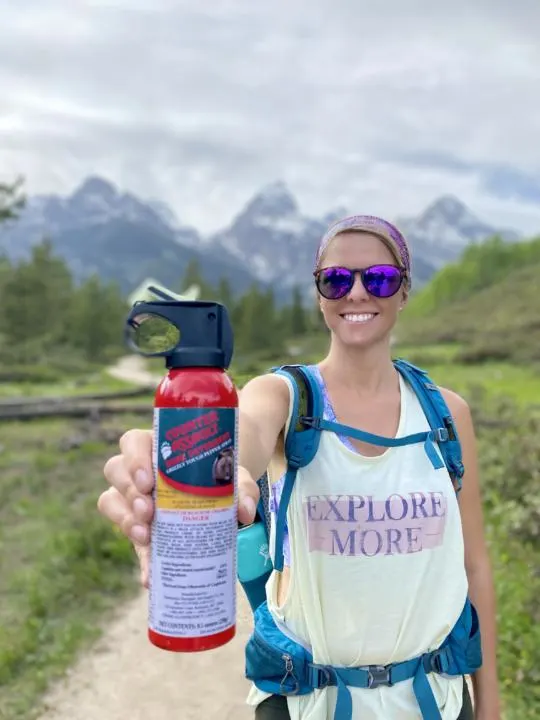
Bear safety begins before you even venture outdoors in bear country. The two most important bear safety tools are bear spray and proper food storage.
Bear Spray
The most accessible bear deterrent is bear spray. It is a type of pepper spray that is sprayed toward a charging bear to stop an attack. The active ingredient, capsicum, causes intense burning of the eyes, nose, & mouth.
Make sure you have an EPA-approved bear spray. Self-defense pepper sprays for humans are not a suitable replacement for bear sprays.
Bear spray should be carried outside your pack so it can be deployed quickly, so do not carry it inside your pack. They make special bear spray holsters, especially for this purpose.
Bear Food Storage
The rules regarding acceptable food storage may vary based on location. So consult the managing agency where you are visiting for precise guidelines about what is and is not allowed.
But generally, when camping overnight in bear country, it is important to store food in one of the acceptable food storage options (bear boxes, bear canisters, or bear bags). More on this later.
Avoiding Bear Encounters
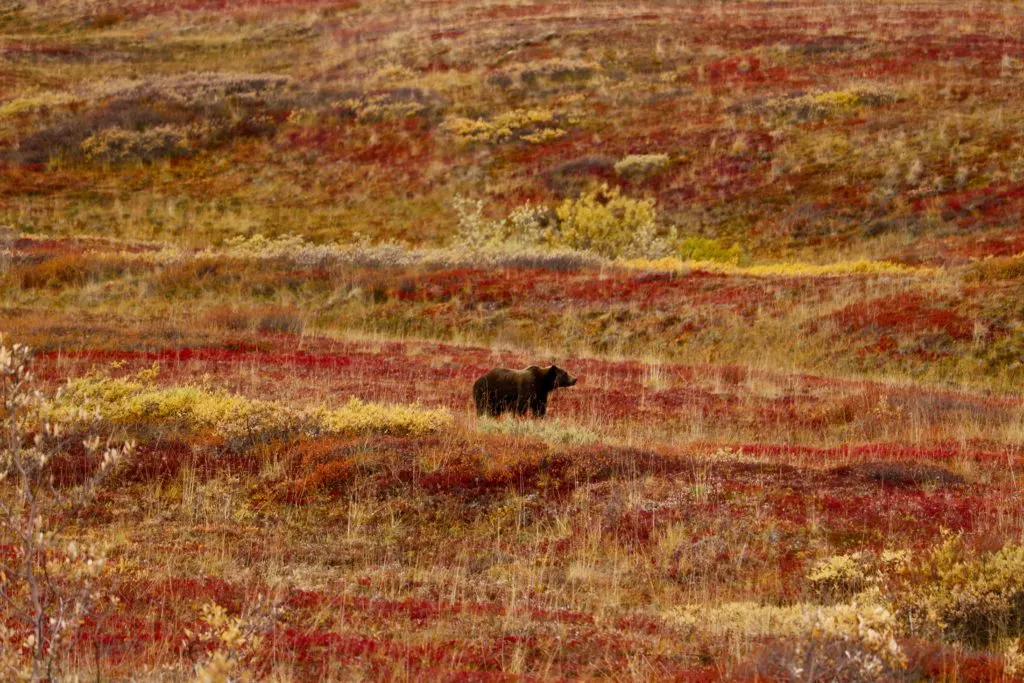
Step one of bear safety is avoiding encounters altogether. Avoiding negative bear encounters is pretty much the same for both black and brown bears.
When traveling in bear country it’s recommended to make noise that alerts bears to your presence. If they can hear you coming, most bears will avoid humans. You can make noise by talking, singing, clapping, or wearing a bell.
Be especially cautious of accidentally sneaking up on bears in areas where visibility is low or there is more environmental noise. For example, you can more easily surprise a bear in thick undergrowth, or if noise from rivers prevents you from being heard.
If you do encounter a bear, the goal is to remain calm and de-escalate the situation.
There are some common reactionary instincts that you must resist.
- Do not run away.
- Do not let out a high-pitched squeal or other loud noises.
- Do not climb a tree.
It may be very hard to resist these instincts, but it could save your life.
High-Risk Groups
People hiking alone or in small groups are at greater risk of accidentally sneaking up on a bear. And also at greater risk for the bear mistaking them as prey or an easy target.
Fast-moving individuals like mountain bikers and trail runners are at increased risk of triggering a bears chase response. They also carry more risk of surprising a bear by approaching too quickly.
Hunters are at high risk because they are intentionally hiding their presence, making animal calls. And of course, their kills are magnets for bears.
People with dogs are another high-risk group. It is hard to control your dog’s reaction to bears, which can lead to more dangerous encounters. For that reason, it is highly discouraged to hike with dogs in active bear areas.
Read The Bear’s Behavior To Determine Your Response
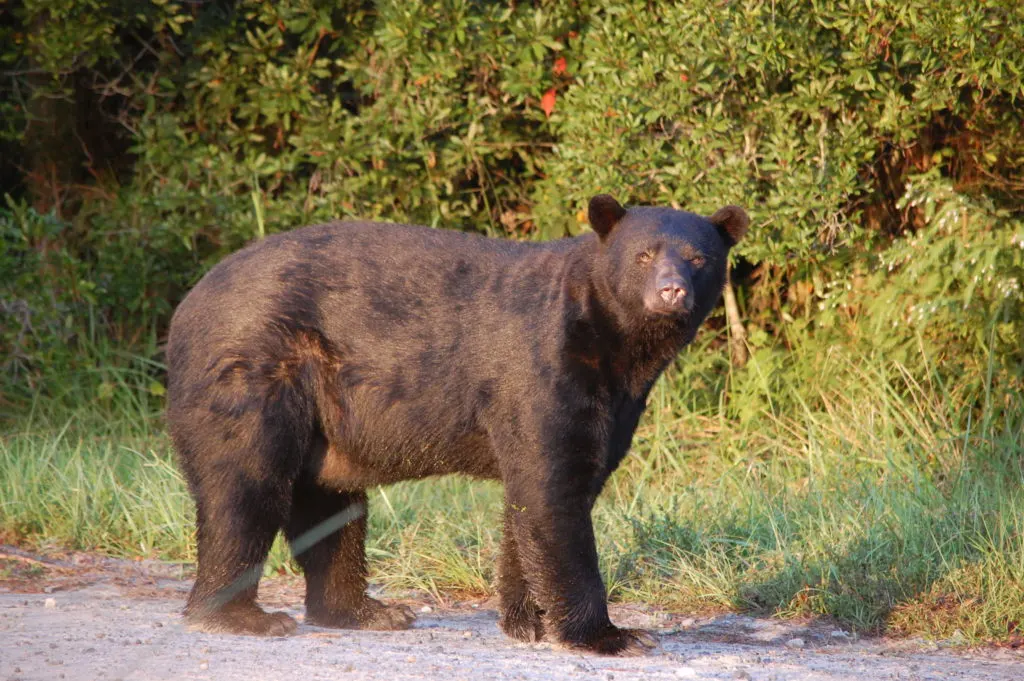
The way the bear behaves will entirely shape how you should respond and react. Generally, there are four possible behaviors.
- Bear does not notice you, ignores you, retreats
- Bear is curious, actively looking at you
- Bear is stalking or approaching you
- Bear is charging or attacking
Bear Does Not Notice You, Ignores You, Retreats
If you see the bear first and the bear does not seem to notice you, back away quietly while the bear is not looking in your direction.
If the bear appears to have noticed you but then is ignoring you. If you cannot continue without getting closer to the bear, then turn around. If the bear is blocking your path to exit, then wait to see if the bear moves along on its own. Or potentially find a suitable detour at a safe distance around the bear.
Bear Is Curious, Actively Looking At You
If the bear is curious and/or actively looking at you, stand your ground and remain calm.
Keep talking in a low voice and slowly waive your arms to help the bear identify you as human and not prey.
Pick up small children and ensure any pets are held on leash.
If you are in a group, stay together.
Try to make yourself appear larger by standing on a rock, stump, or high ground.
If the bear stands on its back legs, it is a curious behavior and likely just trying to get a better look.
Do not put your pack down, and never try to bait or distract a bear with food.
Only after you determine the bear is moving away from you, then slowly move sideways away from the bear. You want to move in a way that leaves an open path for the bear to retreat on its own.
If the bear pursues, then revert to standing your ground and repeat the process.
When A Bear Is Approaching Or Stalking You
If a bear appears engaged with you and is actively moving towards you, stand your ground. Most of these encounters are defensive. The bear is likely trying to protect its cubs, food, or territory.
If you are carrying bear spray, remove it from the holster and remove the safety clip. But DO NOT use the spray unless the bear is closer than 30 feet AND moving aggressively towards you.
If the bear seems calm or unaggressive, continue trying to identify yourself as a human, talking calmly in a low voice, slowly waving your arms, and appearing larger.
If the bear is exhibiting signs of agitation (teeth clacking, huffing, stomping, head swinging, and hopping forward) These are all likely bluff attempts to intimidate.
However, in rare cases, a bear may show predatory stalking behavior.
If the behavior seems like methodical stalking (quiet and deliberate, like an animal hunting its prey) then get more aggressive, shout loudly, wave your arms, and try to appear like a threat.
A Bear Charges You or Attacks You
There are two common types of bear charges: bluff charges and aggressive charges.
Bluff Charges
Bears are known to make bluff charges in an attempt to intimidate or scare. Continue to stand your ground and try to make yourself appear larger.
When a bear is bluff charging its head may be up and ears forward. A bluff charge is usually a slower speed. They may stomp with their front paws or hop toward you. They don’t actually want to fight and are just hoping the bluff is enough to scare you off. While a bluff charge is very intimidating, it is actually a good sign that the bear doesn’t intend to attack.
Bears will break off a bluff charge by veering off or stopping before making contact with you.
Discharge your bear spray when the bear is within 30 feet.
Aggressive Charges
An aggressive or predatory charge will typically be with head down, ears back, and full speed. Discharge your bear spray when the bear is within 30 feet.
This is where the biggest difference between black bears and brown (grizzly) bears is.
If a Black Bear charges you and makes contact fight back with everything you have. Aim attacks at the face and snout. DO NOT PLAY DEAD.
If a Brown (Grizzly) Bear charges you and makes contact, PLAY DEAD. Lie on your stomach and cross your arms over your head and neck. Resist the bear’s attempts to flip you over. Leave your pack on for extra protection. Be as still and quiet as possible. Wait a few minutes until after the bear is gone to get up and leave the area yourself. If the attack persists, only then fight back with everything you have.
The only caveat to this is predatory behaviors in Grizzly Bear attacks. If a brown (grizzly) bear is showing signs of predatory behavior, stalking, etc, then you should not play dead. Skip right to fighting back with everything you have. This is the advice from the IGBC (Interagency Grizzly Bear Committee). Playing dead is unlikely to be effective since the bear is viewing you as prey.
Bear Spray Use & Tips
- Don’t spray until the bear is in range (typically within 30 feet).
- Your goal is to get the spray into the bear’s eyes, nose, and mouth.
- Bear sprays do not cause any lasting damage to the animal.
- Bear spray can cause friendly fire.
- If the bear is upwind from you, try to re-position yourself so the bear is downwind, or at least cross-wind.
- Adjust the spray angle to account for wind.
- Never carry bear spray in your pack, it must be easily accessible outside your bag, in a belt or chest holster is preferred.
- Bear spray expires (check the date on the bottle).
- You can often rent bear spray from visitor centers, outdoor retailers, tour operators, etc.
- Bear spray is not a repellent, so DO NOT apply it to yourself, clothing, or gear.
Using Guns For Bear Protection
There is an ongoing debate between the efficacy of using guns or bear spray as bear protection. Both have been used to successfully end bear attacks/charges (albeit with very different outcomes for the bear).
The legality of guns in certain areas and the skill required, at the very least, make them an unsuitable solution for the masses. Also, the use of firearms as a deterrent has more favor in brown (grizzly) bear territory, where the threat of a predatory attack is higher. Black bear attacks/charges are rarely predatory, thus bear spray is almost always enough deterrent to change the bear’s mind.
If even the experts and lifelong bear country outdoorsmen are actively debating this, I don’t feel qualified to offer a conclusive opinion.
But a big takeaway is this, guns should only be used as bear deterrents by people who are trained and experienced with guns. For pretty much everyone else, it’s gotta be bear spray.
And even people who carry guns will often carry bear spray as well, which I think speaks volumes.
Approved Food Storage For Bears
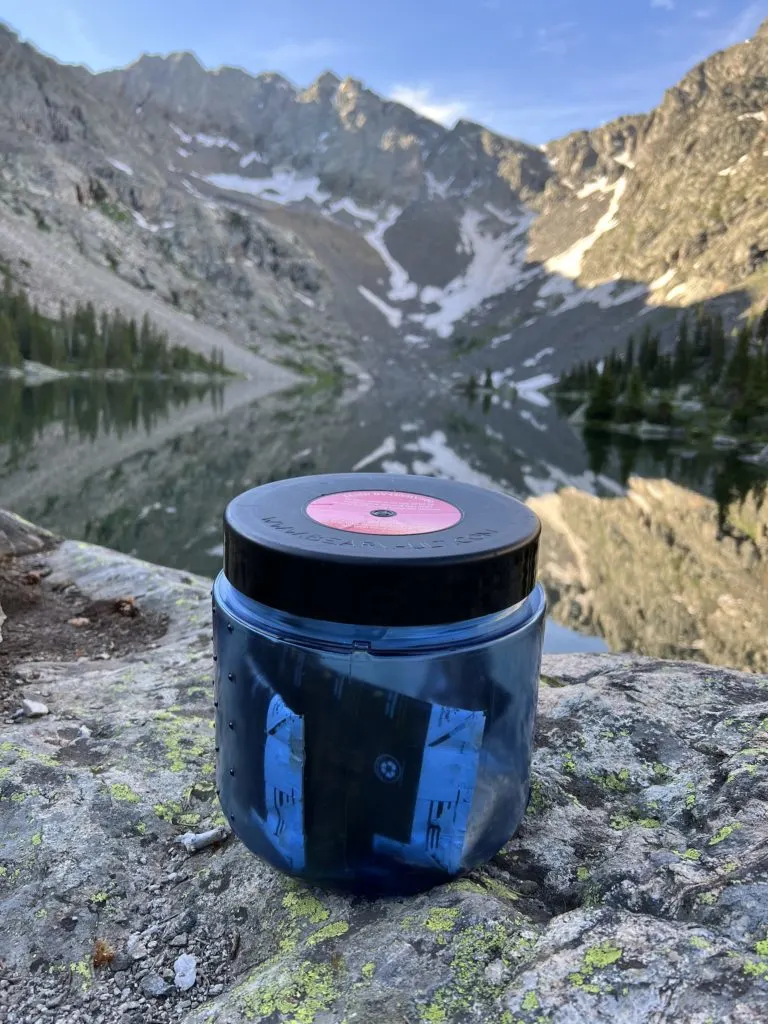
Bears that become habituated to human food often become more aggressive and active around people. These bears are typically euthanized (killed) because attempts at relocation are not a viable long-term solution.
Bears are very smart animals and may have different behaviors and skills depending on location.
What is deemed approved bear food storage varies from place to place. So always consult the local land managing agency for the specific regulations, best practices, and recent bear activity.
And remember, food includes anything with a scent (i.e. drinks, canned food, toothpaste, sunscreen, bug spray, makeup, garbage, and more).
The hierarchy of bear food storage is typically permanent structures like metal bear boxes, followed by bear canisters, and in a tier far below, bear sacks.
Bear Boxes
Bear boxes are metal lockers that are commonly provided at campgrounds in bear country. Often if they are provided, they are also required.
Bear Canisters
The next best type of food storage is bear canisters. These hard plastic containers are designed to prevent bears from accessing food inside. They are the best option for backcountry travel. Our preferred brand is BearVault because of the clear exterior and no-tool operation.
Bear Sacks
The last option is bear sacks like Ursack Major and Ursack Allmity (+critter protection). Bear sacks are made of highly durable Spectra fabric that is resistant to tearing. You tie the sack to a large tree trunk and it can prevent bears from getting your food. However, they will not prevent a bear from completely crushing the contents during an attempt. They are much lighter than bear canisters and easier to pack.
While these Ursack products are still on the list of IGBC-approved products, they have a higher percent chance of failure than canisters or boxes. As such, they are not considered acceptable food storage in many places.
What About Bear Hangs
A bear hang is a method of suspending your food (plus scented items) from a tree branch out of reach of bears. Bear hangs are a pretty outdated and ineffective method of food storage.
There are simply too many variables that contribute to failure (human error, unsuitable trees, bears defeating them). So, most experts and land managing agencies don’t recommend bear hangs anymore.
Food Storage In Vehicles And Coolers
Storing food in vehicles and bear-resistant coolers varies by location. Storing food inside a hard-sided vehicle like a car, truck, campervan, or RV is typically okay for many places. However, food should always be stored out of sight and coolers too. Many bears can recognize a cooler and might try to break into a car if they see one.
Things like soft-side pop-top campers, rooftop tents, and truck beds are not suitable places to store food.
There are some approved bear-resistant coolers. But again it may not be an acceptable form of food storage in all places. Consult the local land managing agency.
Takeaways: Bear Safety Guide
The biggest takeaway from this bear safety guide should be:
- Avoiding bear encounters is the best form of bear safety.
- Carry bear spray and know how to use it.
- Never run from a bear.
- Properly store your food and scented items using approved methods.
- Consult the local land managing agency for the most specific rules, best practices, and recent bear activity.
Thanks for reading! Stay Safe Out There.
